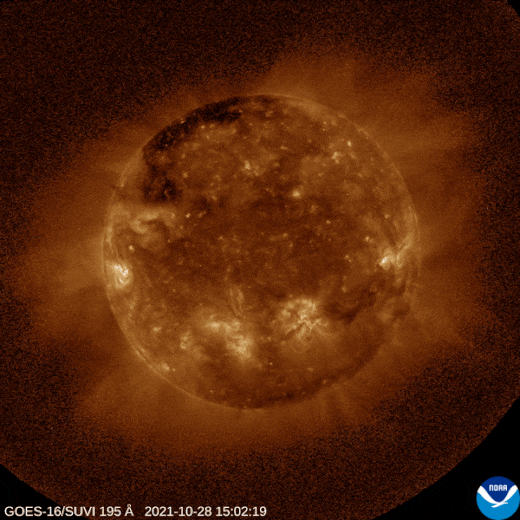|
Monday, Jun. 12, 2023
|
||
| What's up in space |
POSSIBLE GLANCING-BLOW CME: NOAA forecasters say that a CME might hit Earth's magnetic field on June 13th. It was hurled into space by an M2.5-class explosion (movie) on June 9th. The glancing blow could cause, at most, G1-class geomagnetic storms. Aurora alerts: SMS Text
A MEGA-BUBBLE IN THE SUN'S ATMOSPHERE: Last week, NOAA released a list of space weather highlights from Solar Cycle 25. Among many significant events, the most spectacular was an X1-class solar flare on Oct. 28, 2021, blowing a mega-bubble in the sun's atmosphere. NOAA's GOES-16 satellite recorded the explosion:

See also a contrast
enhanced movie of this explosion
This movie comes from an extreme ultraviolet telescope onboard GOES-16 called the "Solar Ultraviolet Imager" (SUVI). Compared to NASA's better-known Solar Dynamics Observatory, SUVI has a wider field of view which allows it to capture extremely large structures like this. Near-realtime images from SUVI may be found here.
What happened next surprised space weather forecasters. The expanding bubble pushed a CME out of the sun's atmosphere. At the time, forecasters predicted it would hit Earth and trigger a strong geomagnetic storm. That's not what happened, though. The CME passed mostly south of our planet, delivering only a glancing blow. The resulting G1-class geomagnetic storm on Oct. 31, 2021, was a minor event with just a brief display of auroras over Canada. This highlights the challenge of forecasting storm systems from a distance of 93 million miles.
NOAA's list of highlights will grow longer in the years ahead. Solar Cycle 25 is still relatively young with maximum activity expected in 2024-2025. And the next mega-bubble might have better aim. Stay tuned! CME alerts: SMS Text
Solar Cycle
25 Time Lapse Movie
4 years of solar activity in only 5 minutes